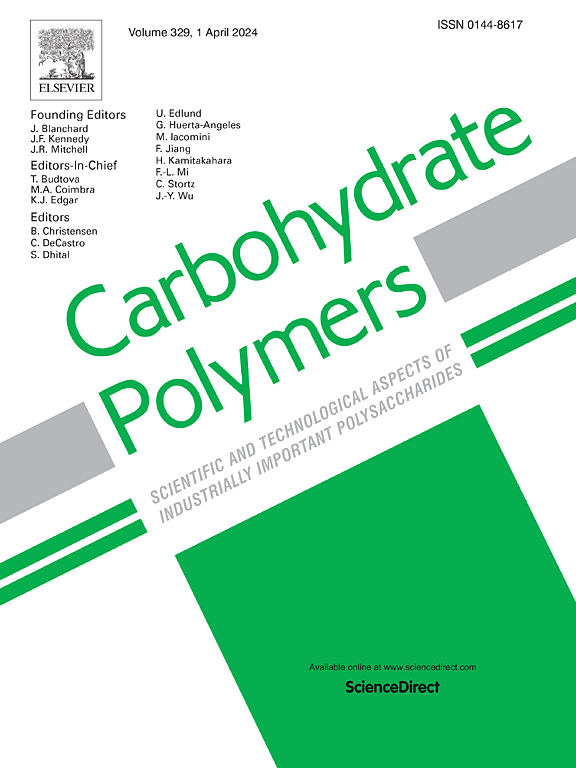Cellulose nanofibers as effective mediator for optical chemical sensors for heavy metal ions detection
IF 12.5
1区 化学
Q1 CHEMISTRY, APPLIED
引用次数: 0
Abstract
Two forms of nanocellulose-based sensing materials were developed for heavy metal ions (HMIs) detection: all-solid-state and suspension. In these materials, cellulose nanofibers (CNF), isolated from cellulose bleached pulp via homogenization, were employed as a support matrix. For all-solid-state optodes development free-base 5,10,15,20-tetraphenylporphyrin (TPP) and zinc-porphyrin derivative (ZnPC) were deposited on CNF support. Moreover, CNF suspension enriched with silver nanoparticles (AgNPs) bearing 5,10,15,20-tetrakis(4-sulfonatophenyl)porphyrin (TPP(SO3)4) was tested for HMIs assessment in solution. The solid-state platform enabled fast and low-cost optical detection of multiple HMIs in individual and multicomponent solutions; a smartphone digital camera was used for optical signal acquisition, while chemometric methods were employed for data analysis. Among tested HMIs, the highest attention was focused on Cd2+ and Pb2+ ions detection, for which the low detection limit (LDL) was estimated 0.0018 and 0.0033 mgL−1, respectively. These values are lower than the WHO provisional guideline values of 0.003 and 0.01 mgL−1 for natural waters. CNF suspension was characterized by SEM, IR and UV–vis spectroscopy, showing a successful loading of TPP(SO3)4 and incorporation of AgNPs into CNF. The effective assessment of HMIs in individual solutions through the naked eye detection, and by UV–vis tests demonstrate the potential of CNF-based sensing materials for environmental monitoring applications.
纤维素纳米纤维作为重金属离子检测光学化学传感器的有效介质
开发了两种用于重金属离子检测的纳米纤维素传感材料:全固态和悬浮液。在这些材料中,纤维素纳米纤维(CNF),通过均质分离的纤维素漂白纸浆,作为支撑基质。为了开发全固态光电器件,在CNF载体上沉积了自由碱5,10,15,20-四苯基卟啉(TPP)和锌-卟啉衍生物(ZnPC)。此外,CNF悬浮液中富集了含有5,10,15,20-四(4-磺酰基)卟啉(TPP(SO3)4)的银纳米颗粒(AgNPs),用于溶液hmi评估。该固态平台能够在单个和多组件解决方案中实现多个hmi的快速、低成本光学检测;光信号采集采用智能手机数码相机,数据分析采用化学计量学方法。在检测的hmi中,Cd2+和Pb2+离子的检测最受关注,其低检出限(LDL)估计分别为0.0018和0.0033 mg / l−1。这些值低于世卫组织对天然水的临时指导值0.003和0.01 mg / l−1。通过扫描电镜、红外光谱和紫外可见光谱对CNF悬浮液进行了表征,结果表明TPP(SO3)4的成功加载和AgNPs的成功掺入。通过肉眼检测和紫外-可见测试对单个溶液中的hmi进行有效评估,证明了基于cnf的传感材料在环境监测应用中的潜力。
本文章由计算机程序翻译,如有差异,请以英文原文为准。
求助全文
约1分钟内获得全文
求助全文
来源期刊

Carbohydrate Polymers
化学-高分子科学
CiteScore
22.40
自引率
8.00%
发文量
1286
审稿时长
47 days
期刊介绍:
Carbohydrate Polymers stands as a prominent journal in the glycoscience field, dedicated to exploring and harnessing the potential of polysaccharides with applications spanning bioenergy, bioplastics, biomaterials, biorefining, chemistry, drug delivery, food, health, nanotechnology, packaging, paper, pharmaceuticals, medicine, oil recovery, textiles, tissue engineering, wood, and various aspects of glycoscience.
The journal emphasizes the central role of well-characterized carbohydrate polymers, highlighting their significance as the primary focus rather than a peripheral topic. Each paper must prominently feature at least one named carbohydrate polymer, evident in both citation and title, with a commitment to innovative research that advances scientific knowledge.
 求助内容:
求助内容: 应助结果提醒方式:
应助结果提醒方式:


